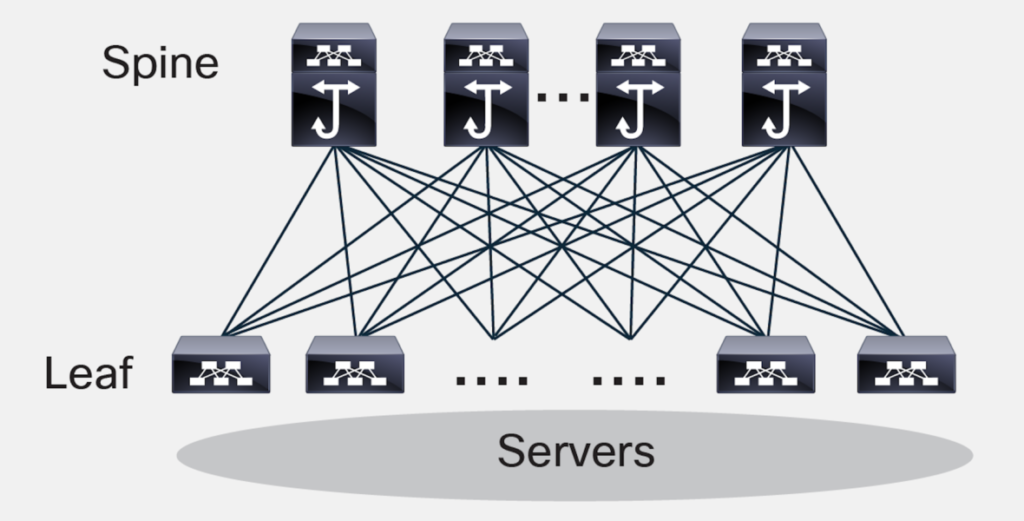Table of Contents
I. Introduction
Data centers are the heart of modern organizations in the fast-paced digital landscape, necessitating agile, scalable, and secure networking solutions. Cisco ACI (Application Centric Infrastructure) emerges as a game changer in data center networking, offering enterprises a policy-driven, application-centric solution. This article delves into the core of Cisco ACI, investigating its evolution, architecture, components, deployment, integration, and more.
A. Understanding Cisco ACI (Application Centric Infrastructure)
Cisco ACI, also known as Application Centric Infrastructure, is a cutting-edge networking technology that simplifies, automates, and optimizes data center operations. Unlike traditional network infrastructures, which are centered on network-centric techniques, Cisco ACI is application-centric, with network policies aligned with specific application requirements. ACI improves application speed, security, and agility while decreasing operational complexity by combining physical and virtual networking.
B. Evolution of Data Center Networking Technologies
The growth of data center networking technology has been a continuing path of innovation. Data centers have seen substantial transformations, from traditional network architectures with manual setups to software-defined networking (SDN) solutions. The transition to an application-centric strategy resulted in the creation of Cisco ACI, which redefines how enterprises build, operate, and secure their data center networks.
C. Importance of Cisco ACI in Modern Networks
In today’s digital era, businesses rely heavily on seamless application delivery and performance. Cisco ACI addresses the challenges faced by modern data centers, offering several key advantages. These include streamlined network provisioning, rapid application deployment, enhanced security through micro-segmentation, and simplified network management. Cisco ACI empowers organizations to adapt to dynamic business requirements and optimize their network infrastructure for the future.
II. Cisco ACI Architecture
A. Overview of Cisco ACI Architecture
Cisco ACI architecture is built on the principles of openness, scalability, and automation. At the heart of the architecture lies the Application Policy Infrastructure Controller (APIC), which acts as the central point of management for the entire ACI fabric. The architecture utilizes a spine-leaf topology to provide high-speed, low-latency connectivity between endpoints and applications.

B. Advantages of Cisco ACI Architecture
Cisco ACI architecture brings several advantages that empower organizations to build intelligent and adaptive data center networks:
- Unified Management: The integration of physical and logical constructs within ACI offers unified management, simplifying network operations and reducing complexity.
- Automated Provisioning: With policy-driven automation, ACI streamlines the provisioning of network services, enabling faster application deployment.
- Scalability and Flexibility: The spine and leaf architecture ensures seamless scalability, allowing data centers to grow without compromising performance.
- Security and Micro-Segmentation: ACI’s micro-segmentation capabilities enhance network security by applying fine-grained policies to individual applications or workloads.
C. Understanding Cisco ACI Architecture
Cisco ACI architecture is founded on the principle of application-centric networking. It prioritizes applications and their unique requirements, enabling the network to dynamically respond to changing application needs. ACI moves away from traditional network-centric approaches and adopts a policy-driven model, where administrators define high-level policies based on application requirements. These policies are automatically translated into network configurations, reducing manual intervention and enhancing overall network agility.
1. Physical Construct of Cisco ACI
At the core of Cisco ACI’s physical construct lies the innovative spine and leaf architecture. Spine switches provide high-speed, non-blocking interconnection between leaf switches, creating a scalable and efficient fabric. Leaf switches, in turn, directly connect to endpoints, eliminating the complexities of traditional hierarchical network designs. This architecture enables optimal traffic flow, reduces latency, and allows seamless scalability as the data center grows.

Another vital physical component is the Application Policy Infrastructure Controller (APIC). As the centralized management and automation platform, APIC serves as the brain of the ACI fabric. It provides a comprehensive view of the entire network, allowing administrators to configure policies, monitor traffic, and gain valuable insights into application performance.
2. Logical Construct of Cisco ACI
The logical construct of Cisco ACI revolves around the concepts of Tenants, Contexts, and Bridge Domains. Tenants represent logical application domains, offering isolation and security for different groups of users or applications. Contexts define the virtual routing and forwarding domains within each tenant, ensuring segregation and control over traffic.
Bridge Domains provide layer 2 segmentations within the fabric, allowing administrators to group endpoints with similar network requirements. By associating endpoints with specific Bridge Domains, administrators can enforce consistent policies and achieve granular network segmentation.
III. Key Components of Cisco ACI
Cisco ACI comprises several key components that work together to create a unified, application-centric network environment.
1. Application Policy Infrastructure Controller (APIC)
The Application Policy Infrastructure Controller (APIC) is the heart of the ACI fabric, offering a unified view of the network and its applications. It acts as a single point of control, simplifying policy management and enabling seamless integration with external systems.
2. Spine and Leaf Switches
Spine switches and leaf switches form the foundation of the ACI fabric. Spine switches provide high-speed connectivity and traffic forwarding, while leaf switches connect endpoints to the fabric.
3. Application Network Profiles (ANPs) and Endpoint Groups (EPGs)
Application Network Profiles (ANPs) define the connectivity and policy requirements for applications, while Endpoint Groups (EPGs) organize endpoints with similar requirements, allowing policies to be applied uniformly.
4. Tenants and Contexts
Tenants provide logical isolation and segmentation, ensuring that resources and policies are isolated between different organizations or departments. Within each tenant, contexts enable separate Layer 3 routing domains.
5. Policy Model and Application-Centric Approach
The policy model of Cisco ACI revolves around the application-centric approach, where policies are designed based on the unique requirements of each application. This model ensures that the network aligns precisely with application needs, resulting in optimized performance and security.
IV. FAQs (Frequently Asked Questions)
A. What are the main components of Cisco ACI?
Cisco ACI comprises several key components, including the Application Policy Infrastructure Controller (APIC), Spine and Leaf switches, Application Network Profiles (ANPs), and Endpoint Groups (EPGs), among others.
B. How does Cisco ACI architecture differ from traditional network architectures?
Unlike traditional network architectures, which focus on network-centric approaches, Cisco ACI takes an application-centric approach. It aligns network policies with specific application requirements, enhancing application performance and security.
C. What are the benefits of implementing Cisco ACI in a data center?
Implementing Cisco ACI brings numerous benefits, including streamlined network provisioning, rapid application deployment, enhanced security through micro-segmentation, and simplified network management.
D. Can Cisco ACI be integrated with existing network infrastructures?
Yes, Cisco ACI is designed to integrate seamlessly with existing network infrastructures, providing a pathway for data center transformation while preserving investments in legacy networks.
E. What are some real-world use cases for Cisco ACI deployment?
Real-world use cases for Cisco ACI deployment include data center automation, multi-cloud connectivity, disaster recovery, and dynamic application delivery.
VI. Conclusion
In conclusion, Cisco ACI (Application Centric Infrastructure) empowers the future of data center networking by providing an application-centric, policy-driven approach. The architecture’s key components, such as the APIC, spine and leaf switches, ANPs, EPGs, and policy model, work in unison to deliver optimized application performance, enhanced security, and simplified network management. By embracing Cisco ACI, organizations can achieve data center transformation, unlocking new levels of agility, scalability, and efficiency in the digital era.
As data centers continue to evolve, Cisco ACI remains at the forefront of innovation, shaping the future of networking for businesses worldwide.

3 thoughts on “Cisco ACI Architecture and its Components: Application Centric Infrastructure Components and Architecture”